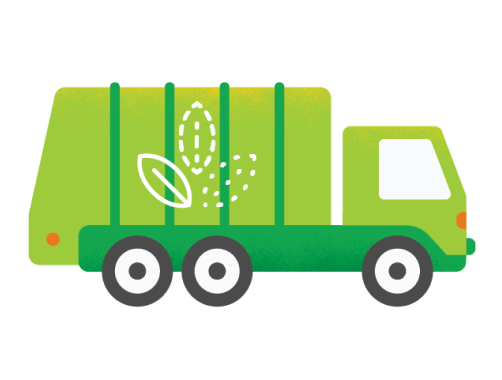
How to Compost
Get the dirt on turning waste back into dirt.

Composting 101
-

 How long does it take?Composting can take anywhere from a few weeks to several months depending on the material composted, temperature, moisture, exposure to air, and other conditions.
How long does it take?Composting can take anywhere from a few weeks to several months depending on the material composted, temperature, moisture, exposure to air, and other conditions. -

 How do I get involved?If municipal composting facilities exist in your area, do a search online or check your local city council website to see if you can sign up for curbside collection.
How do I get involved?If municipal composting facilities exist in your area, do a search online or check your local city council website to see if you can sign up for curbside collection.
Be sure to check with your local facility to make sure that they accept materials like our compostable wipes. If that’s the case, you’re all set to toss your compostable wipes in your compost bin with other yard and food waste.
If municipal facilities don’t exist nearby, consider starting your own compost at home. -

 What shouldn’t be composted?Non-compostable messes, such as human or animal waste. Also, don’t compost items listed as not accepted by your local facility.
What shouldn’t be composted?Non-compostable messes, such as human or animal waste. Also, don’t compost items listed as not accepted by your local facility.

Municipal Composting
-

 What happens at these facilities?Organic waste is unloaded and sorted into piles, where, due to microbial activity, the temperature of the waste gets up to 130-150 degrees Fahrenheit.
What happens at these facilities?Organic waste is unloaded and sorted into piles, where, due to microbial activity, the temperature of the waste gets up to 130-150 degrees Fahrenheit.
Bacteria and fungi break down the waste to produce compost. That compost can then be sold to farmers, garden enthusiasts or other folks who want to keep their soil healthy for plant growth.
Here's how our composting wipes work.
-

Step 1.
Wipe up your compostable mess. There, that’s better.
-

Step 2.
Place your compostable wipes in the compost bin.
-

Step 3.
Your compostable wipes take a trip to the municipal facility if available in your area.
-

Step 4.
It’s placed in large piles with other organic materials.
-

Step 5.
Over a 45- to 90-day period, your compostable wipes will break down into CO2 and biomass.
-

Step 6.
After breaking down, the compost is sold or donated.

Home Composting
-

 What’s a basic home composting setup?You may want to consider purchasing a rotating composter with two chambers. That way, you can have your old compost break down in one chamber and add new material to the other.
What’s a basic home composting setup?You may want to consider purchasing a rotating composter with two chambers. That way, you can have your old compost break down in one chamber and add new material to the other. -


Home Composting Basics
-

Good aeration is key.
Make sure to line the compost bin with wood chips, saw dust or other brown materials (details below about that).
-

Keep things toasty.
Bacteria and fungi release heat. 120 to 150 degrees Fahrenheit is the ideal temp for happy compost.
-

Make it moist.
Keep compost moist to help with the breakdown. To learn how to “squeeze” your compost, check out the EPA website.
-

Balance your mix.
Use a mixture of 75% browns (like our compostable wipes) and 25% greens to achieve a good carbon to nitrogen ratio.
-

Wait, what are greens?
Greens are items like coffee grounds, fruits and vegetables, grass cuttings, etc.
-

And uh, browns?
Browns are items like wood chips, dry leaves, sawdust, our compostable wipes, etc.

Environmental Sustainability: The Clorox Company
Compostable wipes are just a part of the efforts that The Clorox Company is taking to reduce our impact on the planet.
Learn more about efforts here